evy
May 21, 2015Explorer
Flat window vs curved wall (pictures)
I red a couple of threads about this issue, but in my case my fiberglass walls are slightly less curved then the "normal" OEM Ford van walls,
Take a look at my pictures.
I will be installing two 15"W x 24"H windows, one on each sides, and two 12"W x 20"H windows, one in the rear door (passenger side) and one in the side door (closer to the rear).
I live in Canada so everything is taxed and overpriced (compared to US prices) I will be buying most of my parts in the US but I needed to have the windows now, So I found an RV parts store that had them in hand at an ok price (you tell me) 120$ and 140$ each + 15% taxes.
So there is already a foam gasket behind the exterior window lip, I will be adding another 3/4" wide grey gasket (see pic) they called it "dom dom"
I will be removing the excess grey gasket (24h later) with a razor blade and finally sealing everything up with silicone. Again I have never done this before this is what they told me at the RV parts store. Do you have anything to add?
As you can see from the inside picture with the finishing frame, the 8 screws are all in the back and near the corners, I will add a 1.5"x1.5" wood stud around the opening and finishing off with temporary 1/4" plywood shims, I will be installing the finishing 1/4" plywood when the wiring and insulation is done.
Ok here's a question.
Can I seal the outside of the window like I mentioned earlier and maybe a week later remove the inside frame with the 8 screws, remove the wood framing and the plywood shims, to seal the small gap between the window and the outside fiberglass wall with silicone as a precaution then re-install the wood frame (adding industrial glue this time) + temporary plywood shims.
Once all that is done I can have the inside walls sprayed with 1.5" insulating foam, sealing the outside of the wood frame, so with all these precautions I will lower the chance of any leaks, right?
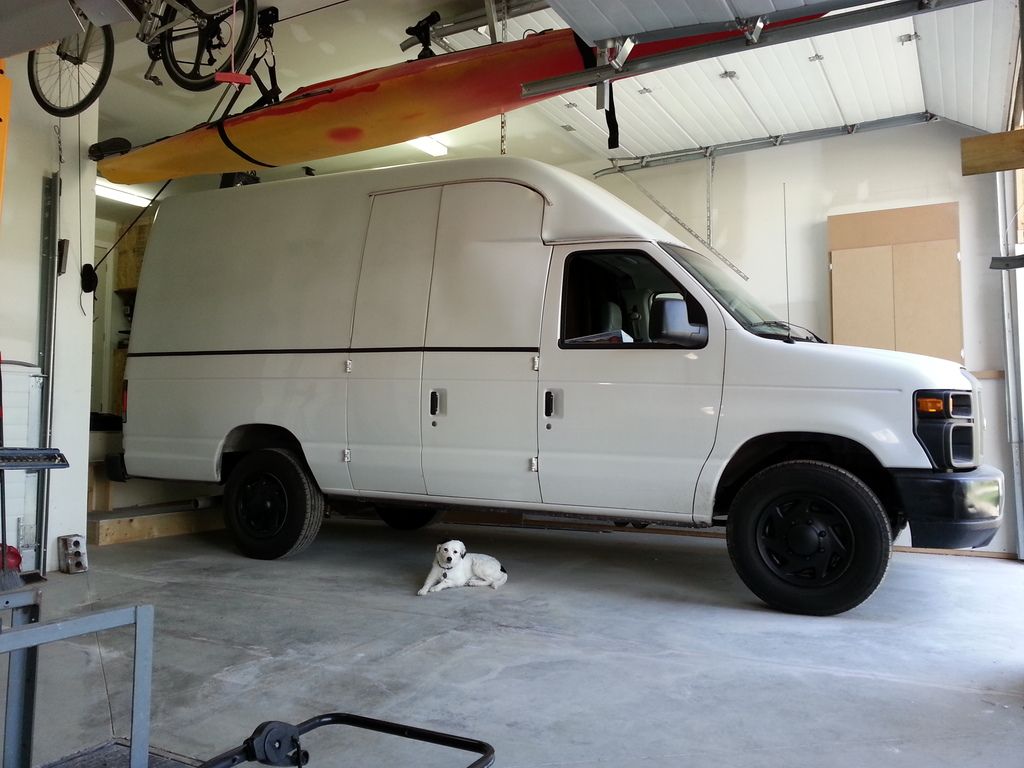
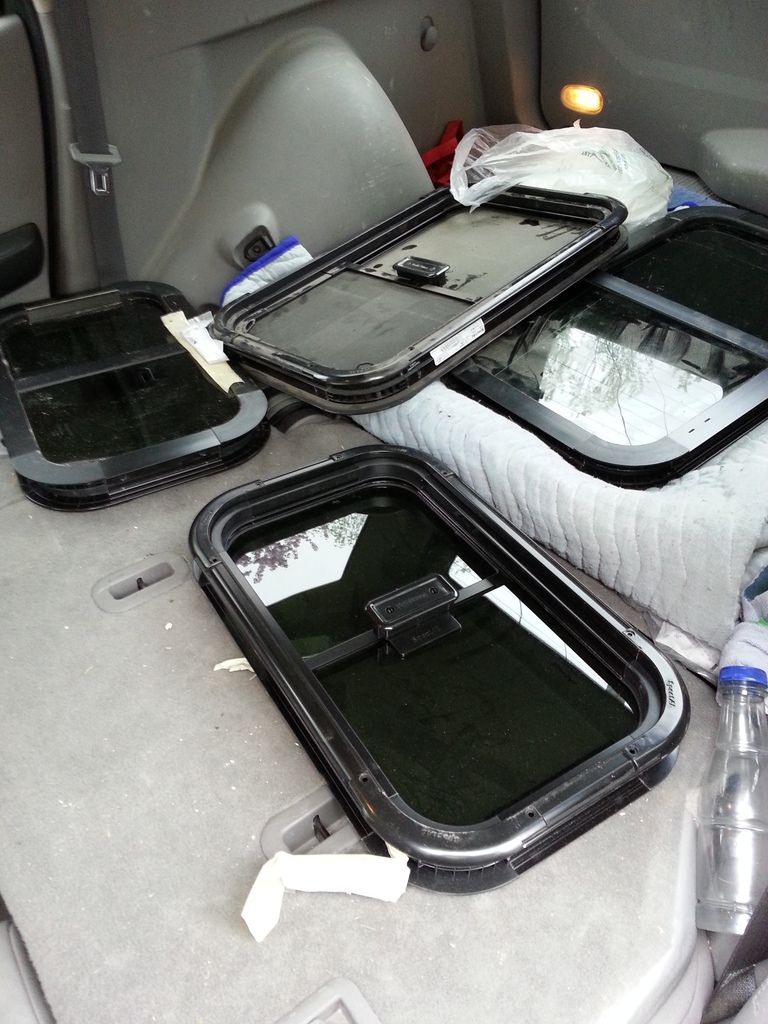
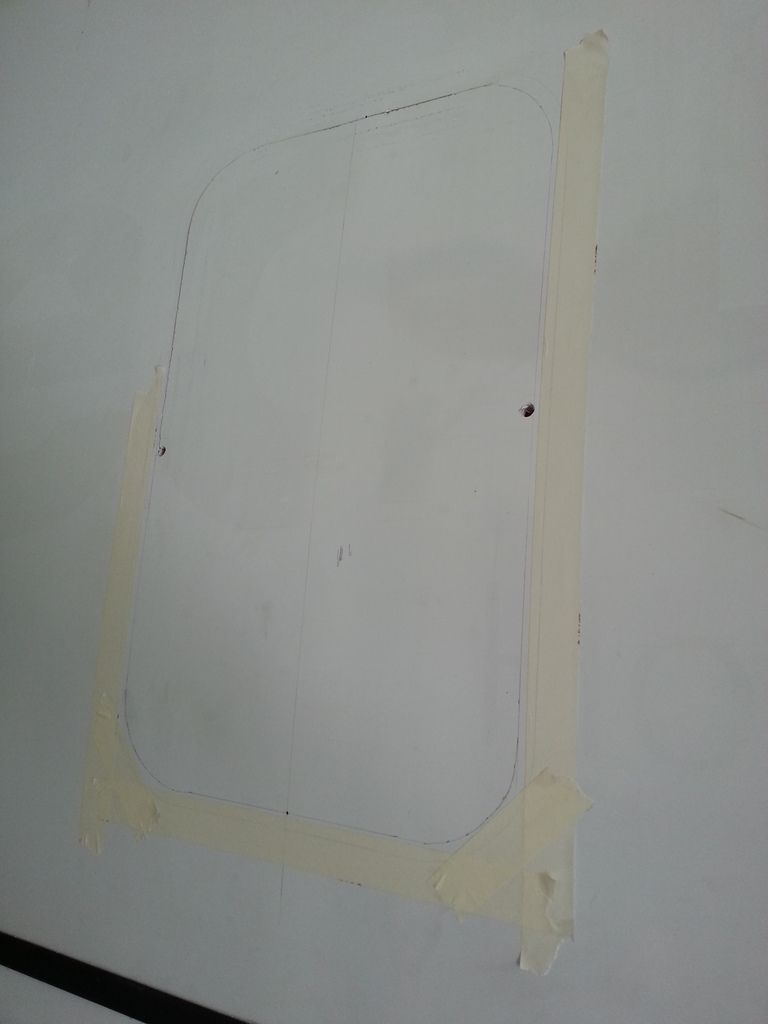
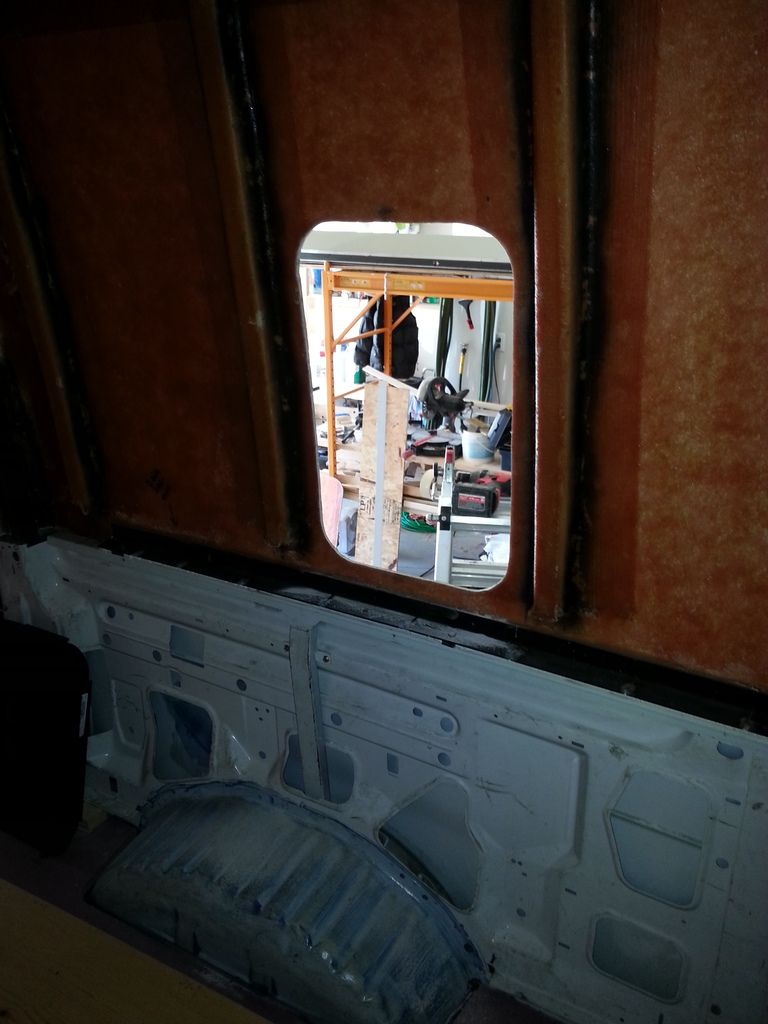
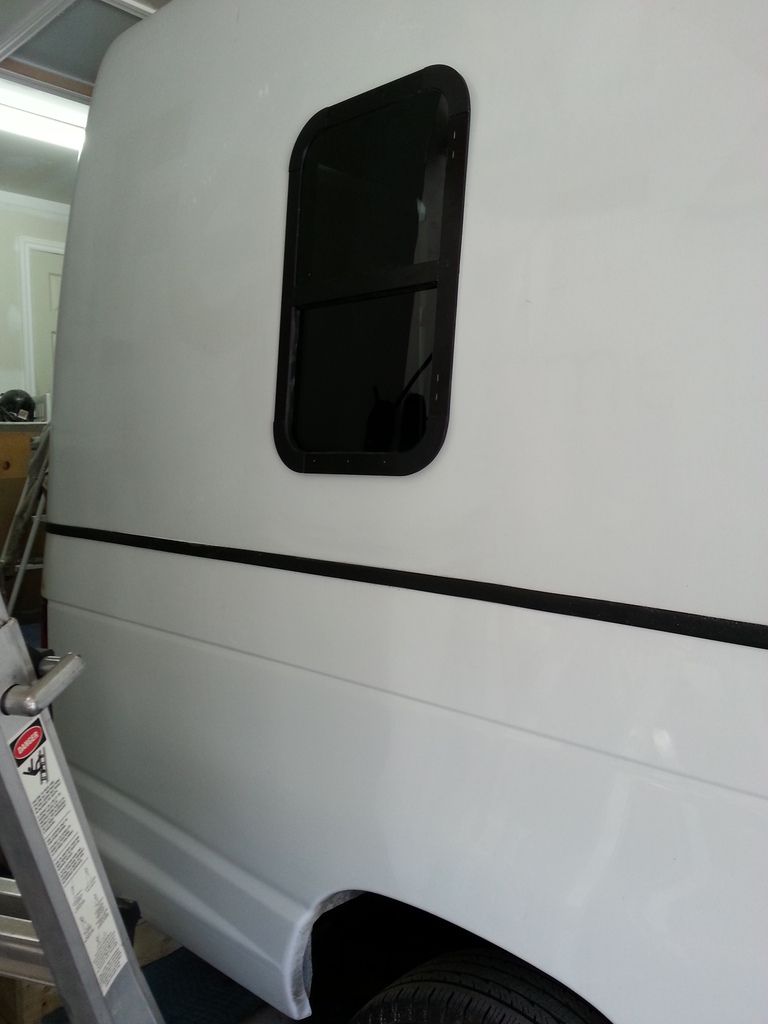

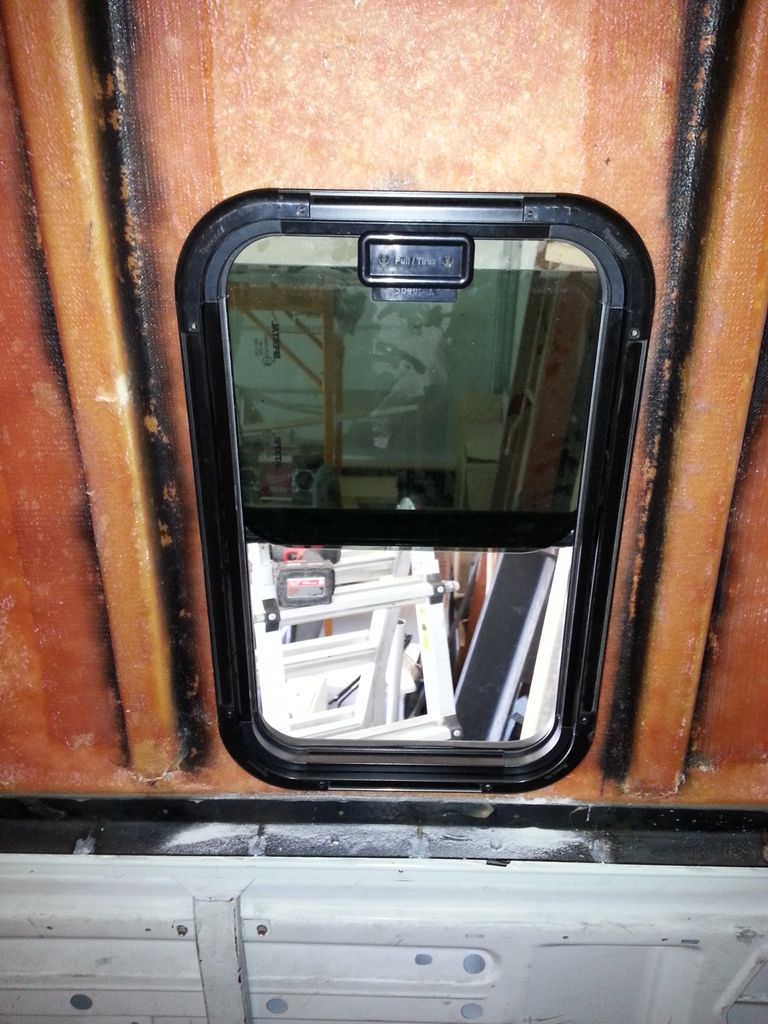

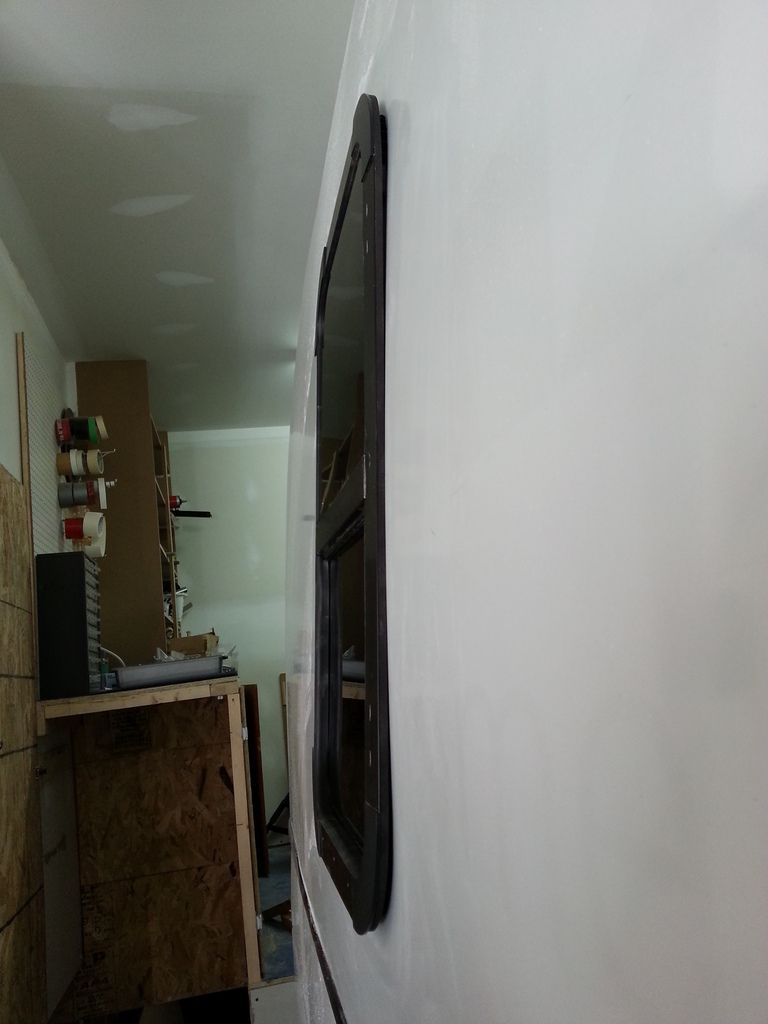
please see the thread titled "Good News for Picture Posting stuck at the top of this forum. Thanks.
Take a look at my pictures.
I will be installing two 15"W x 24"H windows, one on each sides, and two 12"W x 20"H windows, one in the rear door (passenger side) and one in the side door (closer to the rear).
I live in Canada so everything is taxed and overpriced (compared to US prices) I will be buying most of my parts in the US but I needed to have the windows now, So I found an RV parts store that had them in hand at an ok price (you tell me) 120$ and 140$ each + 15% taxes.
So there is already a foam gasket behind the exterior window lip, I will be adding another 3/4" wide grey gasket (see pic) they called it "dom dom"
I will be removing the excess grey gasket (24h later) with a razor blade and finally sealing everything up with silicone. Again I have never done this before this is what they told me at the RV parts store. Do you have anything to add?
As you can see from the inside picture with the finishing frame, the 8 screws are all in the back and near the corners, I will add a 1.5"x1.5" wood stud around the opening and finishing off with temporary 1/4" plywood shims, I will be installing the finishing 1/4" plywood when the wiring and insulation is done.
Ok here's a question.
Can I seal the outside of the window like I mentioned earlier and maybe a week later remove the inside frame with the 8 screws, remove the wood framing and the plywood shims, to seal the small gap between the window and the outside fiberglass wall with silicone as a precaution then re-install the wood frame (adding industrial glue this time) + temporary plywood shims.
Once all that is done I can have the inside walls sprayed with 1.5" insulating foam, sealing the outside of the wood frame, so with all these precautions I will lower the chance of any leaks, right?









Moderator edit to re-size pictures to forum recommended limit of 640px maximum width.
please see the thread titled "Good News for Picture Posting stuck at the top of this forum. Thanks.